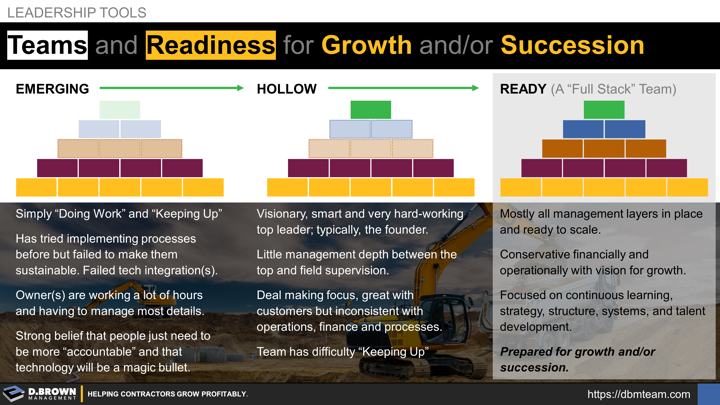Contracting is a very difficult business. Process and technology are absolutely necessary for scalability but it is the right levels of talent that put those things in place ensuring they truly add value.
A robust organizational structure is stacked with the right mix of talent across all five of these critical layers:
- Do Work
- Supervision of Work
- Creating & Managing Systems Within a Functional Area
- Integrating Workflow Across Functional Areas
- Vision, Mission, Culture, Strategy & Long-Term Planning
An Emerging Contractor may only have layers 1 & 2 in place; just starting into layer 3 with a few processes in place. A Hollow Contractor has a very strong and smart leader who is mostly single-handedly doing the functions of layers 3-5 while running fast.
For truly sustainable growth both the Emerging and Hollow contractors must invest in both revenue growth and the management talent required to make them Scalable.
Learn more about levels of work - Tom Foster / Elliott Jaques

